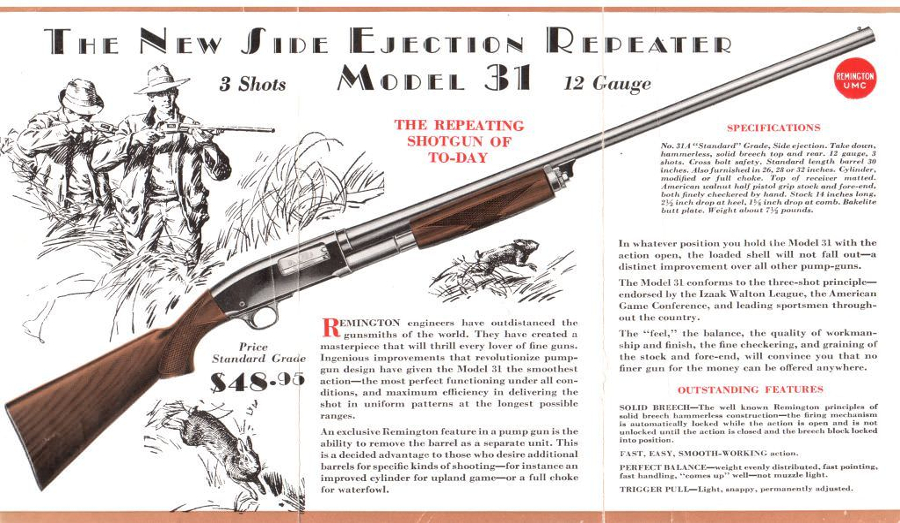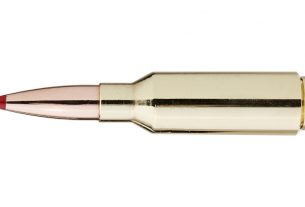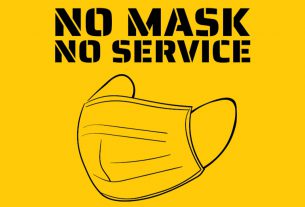While it played second fiddle to the Winchester Model 12 throughout its lifetime, the Remington Model 31 shotgun remains much beloved by shooters and collectors. Produced from 1931 to 1949 until being replaced by the Model 870, the Remington 31 was a development of the 20-gauge John Moses Browning-designed Model 17 shotgun, adapted for side ejection rather than bottom ejection.
The shotgun was Remington’s first side-ejecting shotgun and was intended to take on the Model 12 in a way that the Remington Model 10, Model 17, and Model 29 had not been able to. While nearly 200,000 Remington Model 31 shotguns were produced, the gun was not nearly as popular as the Model 12, which had a nearly two-decade head start.
Despite that, many shotgun aficionados consider the Model 31 to be one of the smoothest pump shotguns of all time. It is often referred to as the “ball bearing” shotgun, as its pump action feels almost smooth enough to be using ball bearings. Place a Remington 31 barrel straight up in the air and hit the slide release lever and the action will normally open at least halfway on its own, something that modern pump shotguns won’t do. That’s a testament to the smoothness of its action.
The Remington 31 was available in 12-, 16-, and 20-gauge versions, with each version being built with its own specific receiver size. While the Remington 31 may have been discontinued decades ago, its legacy lives on, with parts of its operation inspiring the development of the Mossberg 500 series of shotguns.
Advantages of the Remington Model 31
1. Smoothness of the Action
You’ll be hard-pressed to find a pump shotgun that cycles smoother than a Remington 31. Find one to get your hands on and odds are once you’ve racked the slide a few times you won’t want to let it go.
2. Low Cost
While Remington 31s in near-new condition and various specialized trap and skeet versions can command high prices, in general the Remington 31 will be much cheaper than a Winchester Model 12 of the same vintage. Standard field grade Model 31s, particularly if they’ve got their fair share of dings, can often be found for under $300, and occasionally even under $200. For a shotgun of that quality that’s a real bargain.
3. C&R Status
Because Remington Model 31 production ceased in 1949, they are classified as curios and relics. That means anyone with a Type 03 FFL can purchase one and have it shipped to them directly.
Disadvantages of the Remington Model 31
1. Lack of Parts Availability
With the last Model 31s leaving the assembly line 70 years ago, parts are mostly cannibalized from other guns at this point. Many replacement parts aren’t available, and those that are aren’t drop-in fits, they’ll require some hand-fitting to work right. And if you need a replacement barrel, you’re just about out of luck. Replacement barrels often cost more than the shotgun itself.
2. Lack of Parts Interchangeability
There were three series of Model 31 shotguns produced: the 1931 series, the 1934 series, and the 1941 series. Each of these differs in its takedown system, and parts may not interchange among shotguns of the various series. The 1941 series also introduced a longer trigger guard tang that required a cutout in the stock. And because the 12-, 16-, and 20-gauge models were each built on different receiver sizes, the stocks won’t interchange among those three either.
3. Low Magazine Capacity
Most Model 31 shotguns only fit four rounds of 2 3/4” shotgun ammunition in the magazine tube. Early versions of the Model 31 may be found with a crimped magazine tube that only fits two rounds, in order to comply with federal regulations regarding the hunting of migratory waterfowl. In either case that’s less than the five-round magazines standard on most modern pump shotguns. And in the case of the Remington 31 there’s no way to expand that magazine capacity.
This article was originally posted on Red Tea News.





